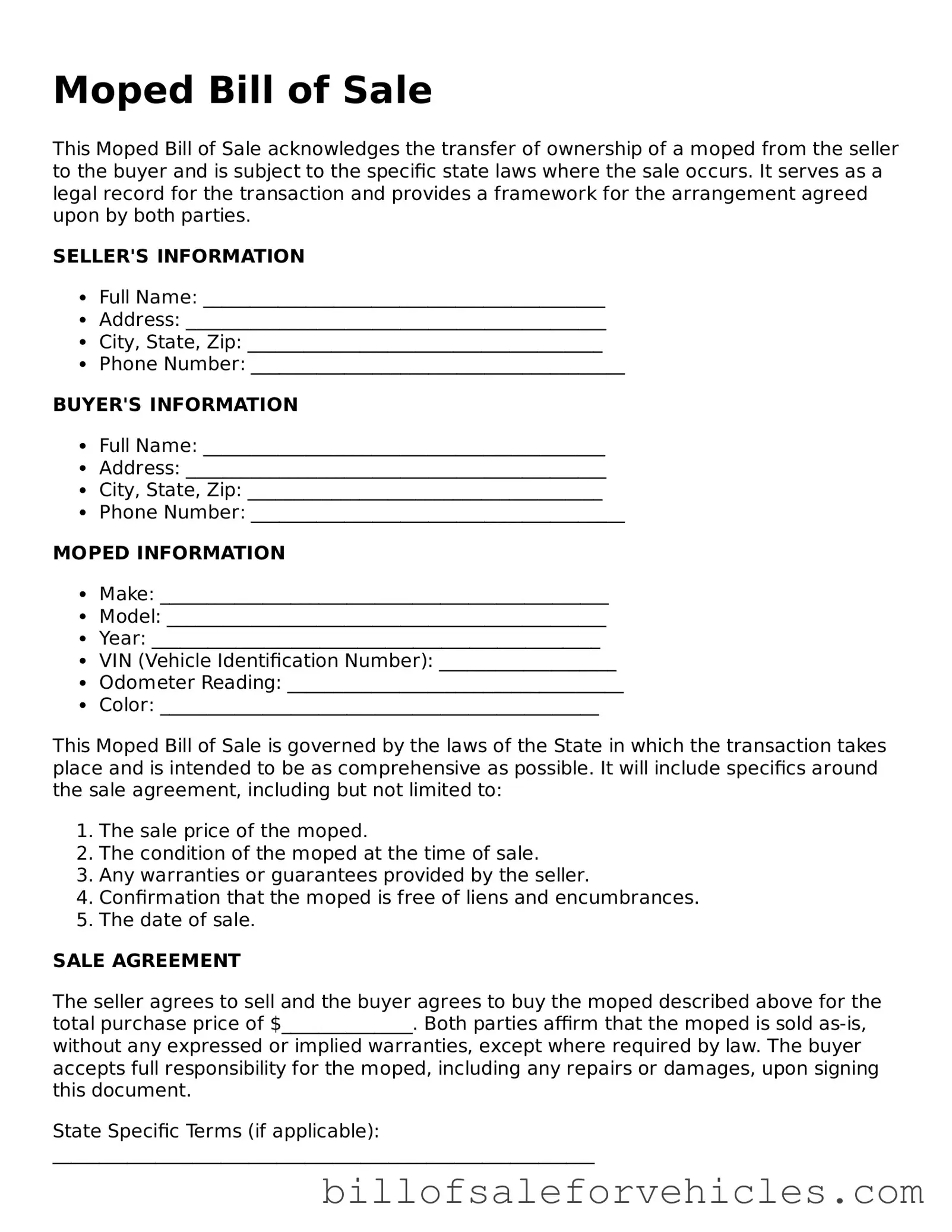What is a Moped Bill of Sale form?
A Moped Bill of Sale form is a legal document that records the transfer of ownership of a moped from the seller to the buyer. It provides proof that the buyer has purchased the moped and outlines the details of the transaction, including the date, price, and descriptions of the moped.
Why is it important to have a Moped Bill of Sale?
Having a Moped Bill of Sale is important because it serves as evidence of the transaction between the buyer and seller. It can help to protect both parties in case of disputes or if proof of ownership is required by the law. Additionally, it may be necessary for registration, taxation, or insurance purposes.
What information should be included in a Moped Bill of Sale?
A comprehensive Moped Bill of Sale should include the full names and addresses of both the buyer and the seller, the sale date, the sale price, a detailed description of the moped (including make, model, year, mileage, and VIN), and any other terms or conditions of the sale. It should also be signed and dated by both parties.
Do both the buyer and seller need to sign the Moped Bill of Sale?
Yes, for the Moped Bill of Sale to be considered valid, it must be signed and dated by both the buyer and the seller. This helps to verify the agreement and ensure that both parties acknowledge the details and terms of the transaction.
Is a Moped Bill of Sale legally binding?
Yes, a Moped Bill of Sale is a legally binding document once it has been signed by both the seller and the buyer. It can serve as a legal contract that documents the transfer of ownership and can be used in court if disputes arise.
Do I need to notarize my Moped Bill of Sale?
While notarization is not always required, it can add an extra layer of legal protection and authenticity to your Moped Bill of Sale. The requirements for notarization can vary by state, so it’s a good idea to check local laws to determine if notarization is necessary for your situation.
Can I create my own Moped Bill of Sale?
Yes, you can create your own Moped Bill of Sale. It should include all the necessary information about the transaction and the moped, as well as the signatures of both parties. However, using a template or consulting with a legal professional to ensure that all legal requirements are met can be beneficial.
